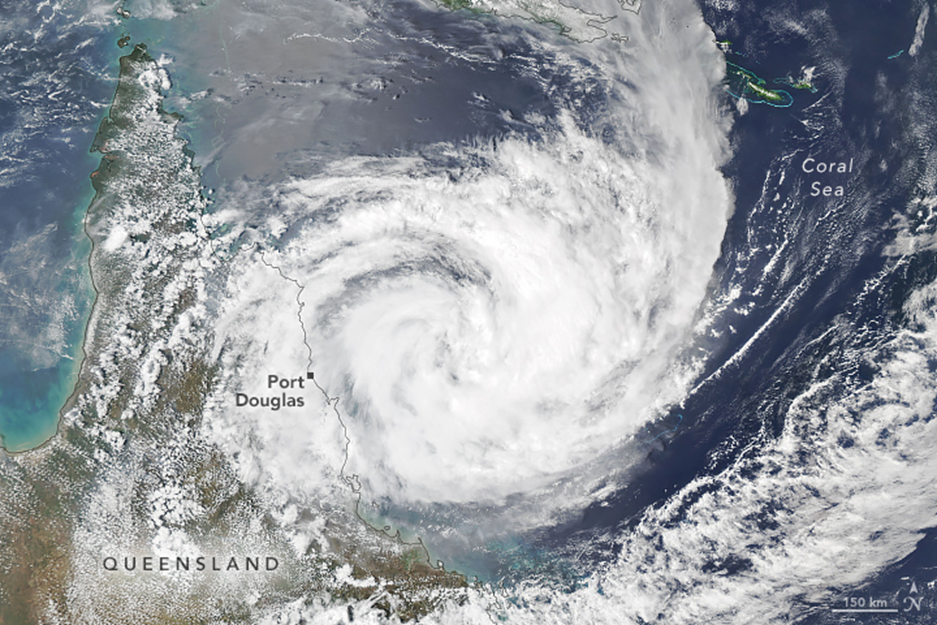
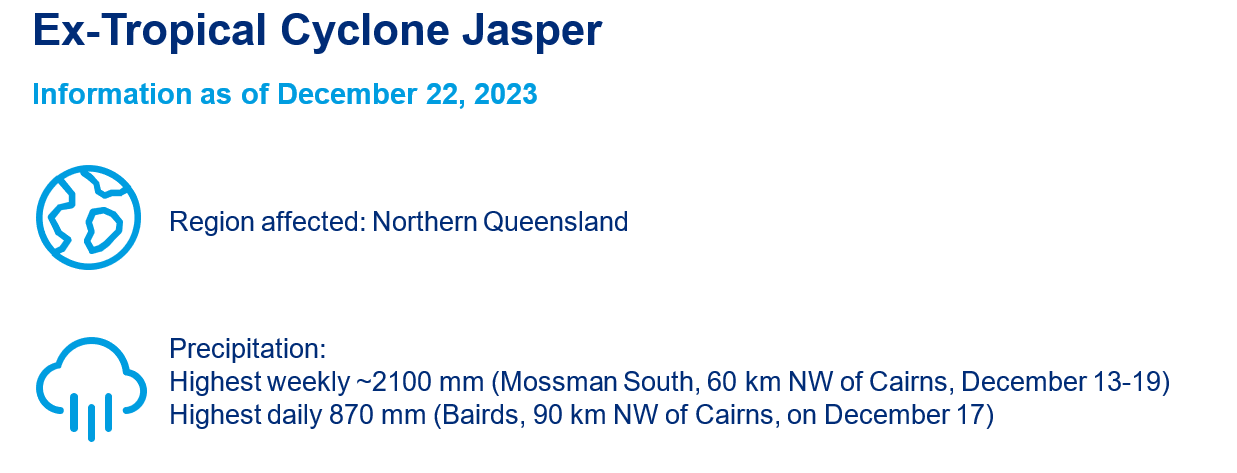
- Largest flooding occurred after Tropical Cyclone Jasper weakened into a tropical low, causing heavy rainfall and flooding in northern Queensland.
- Significant flooding around Machans Beach, Holloways Beach, Caravonica, Mareeba and Cairns Airport. There was also reported flooding in Trinity Park, Smithfield and Aeroglen.
- First significant cyclone catastrophe event post-establishment of the Australian Cyclone Reinsurance Pool.
The Ex-Tropical Cyclone Jasper post-event report comprises the following sections:
- Meteorological Discussion
- Areas with Extreme Rainfall
- Damage Impacts
- Large Insured Losses
Meteorological Discussion
The Australian Bureau of Meteorology (BOM) reported a tropical disturbance on December 2 forming in the southern Pacific Ocean in the Fijian meteorological region. The system then moved into the Australian meteorological region and intensified into a tropical cyclone on December 5, and was named Jasper. The system then intensified and moved in a southerly direction, fueled by warm sea temperatures and low wind shear. Jasper reached its peak intensity as a Category 4 system on December 8, where it tracked in a south-westerly direction toward eastern Queensland, the northeastern state of Australia.
On December 9, Jasper started to track more westward, past the south of Willis Island, where strong wind shear and dry air weakened the system to Category 1 strength. However, Jasper re-intensified back to Category 2 strength on Wednesday afternoon, December 13. Later that night, it made landfall near Wujal Wujal, an aboriginal town 120 km north of Cairns. Jasper was downgraded to a tropical low at midnight AEST December 14.
While Jasper was no longer a tropical cyclone, its remnant continued moving westward slowly and became stationary approximately 400 km northwest of Cairns on December 16 and 17. The system generated a moist south-easterly flow along the far north Queensland coast. The moist tropical air then was lifted by the mountains in the regions, triggering heavy rainfall and subsequent flooding. Figure 1 below shows Cyclone Jasper’s track from December 5 to landfall on December 14.
Figure 1: Cyclone Jasper Track.
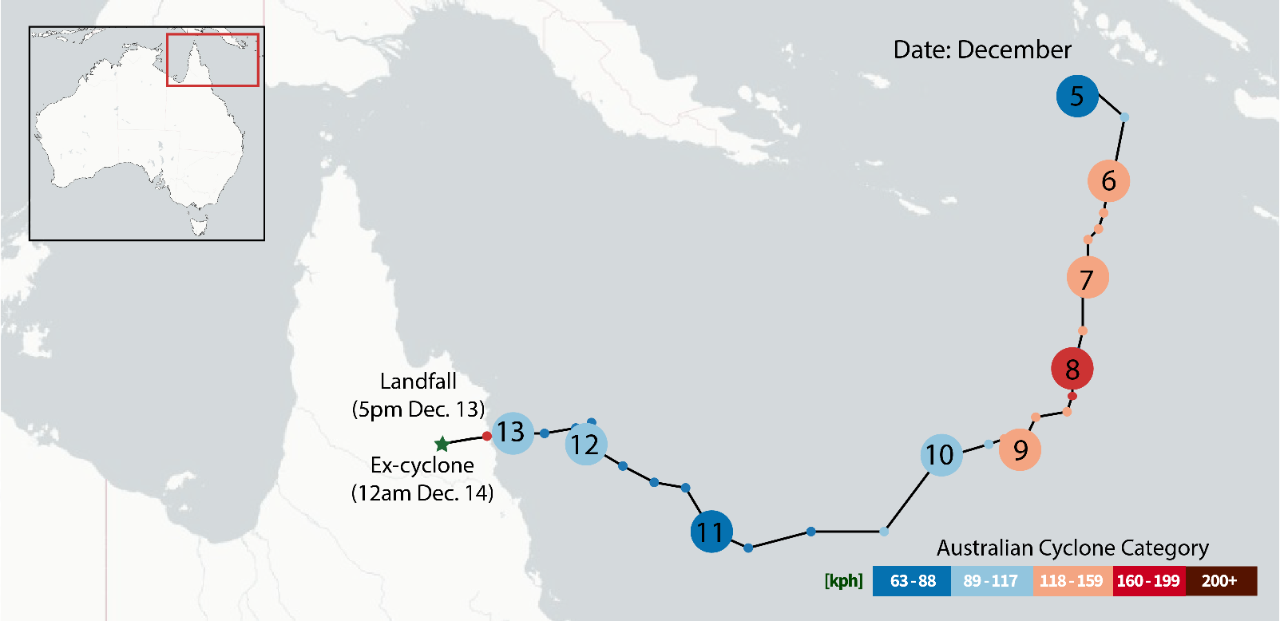
Source: BOM / Graphic: Guy Carpenter
Between December 13 and 19, Cairns and surrounding areas saw total rainfall of 600-900 mm, with some locations receiving more than 1,000 mm (Figure 2). Mossman, a rural town of Douglas and 60 km northwest of Cairns, received the heaviest rainfall of 2,100 mm during the week. 24-hour rainfall exceeded 500 mm in some areas on December 17 (Figure 3).
Figure 2: 7-day rainfall totals to December 19.
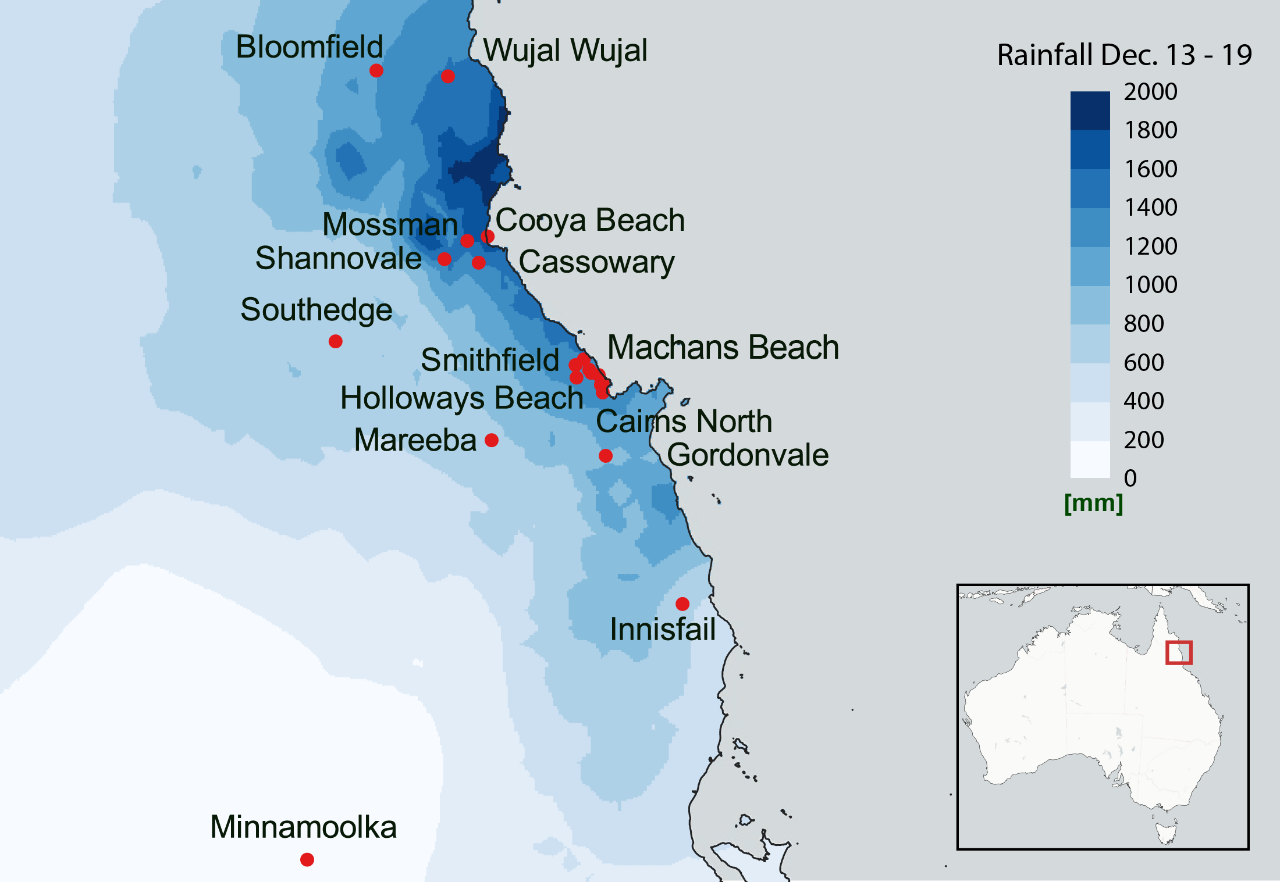
Source: BOM / Graphic: Guy Carpenter
Figure 3: 24-hour rainfall totals on December 17.
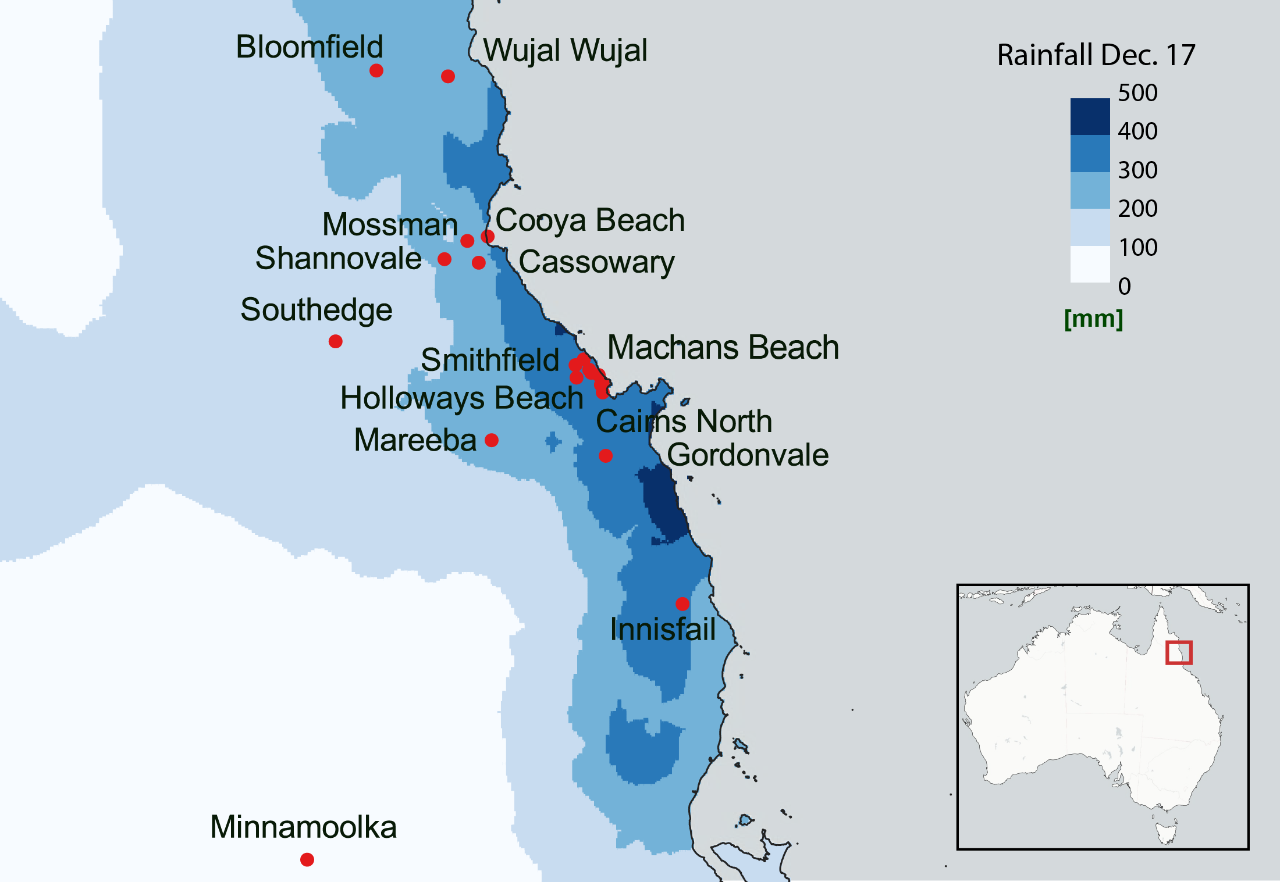
Source: BOM / Graphic: Guy Carpenter
Areas with Extreme Rainfall Around the Barron River
Guy Carpenter undertook preliminary mapping of the flood extents based on the river gauge data and available flood models for the lower Barron River region. Table 1 shows worst impacted localities considering the Geoscape’s Geocoded National Address Database (G-NAF) and the indicative flood extents for the Barron River. Note that flooding for this event may occur from both fluvial (riverine) and pluvial sources and the mapping shown below is designed to capture the addresses impacted by fluvial flooding across the catchment. Figure 4 displays the flood extent over the G-NAF addresses.
Table 1: Worst impacted Localities.
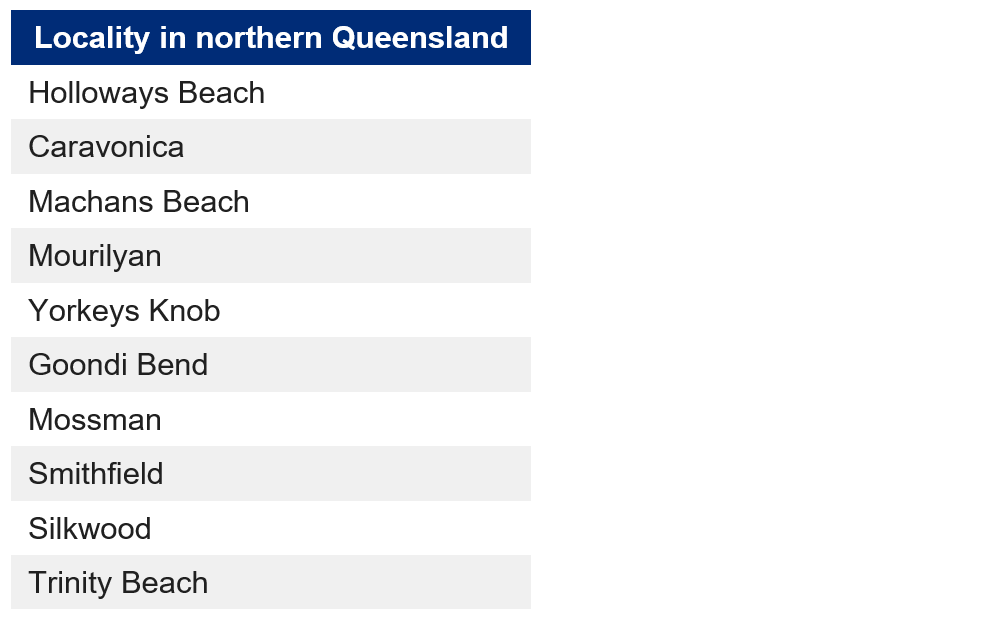
Source: Guy Carpenter/Council Modeling
Figure 4: Indicative flood extent for the lower Barron River.
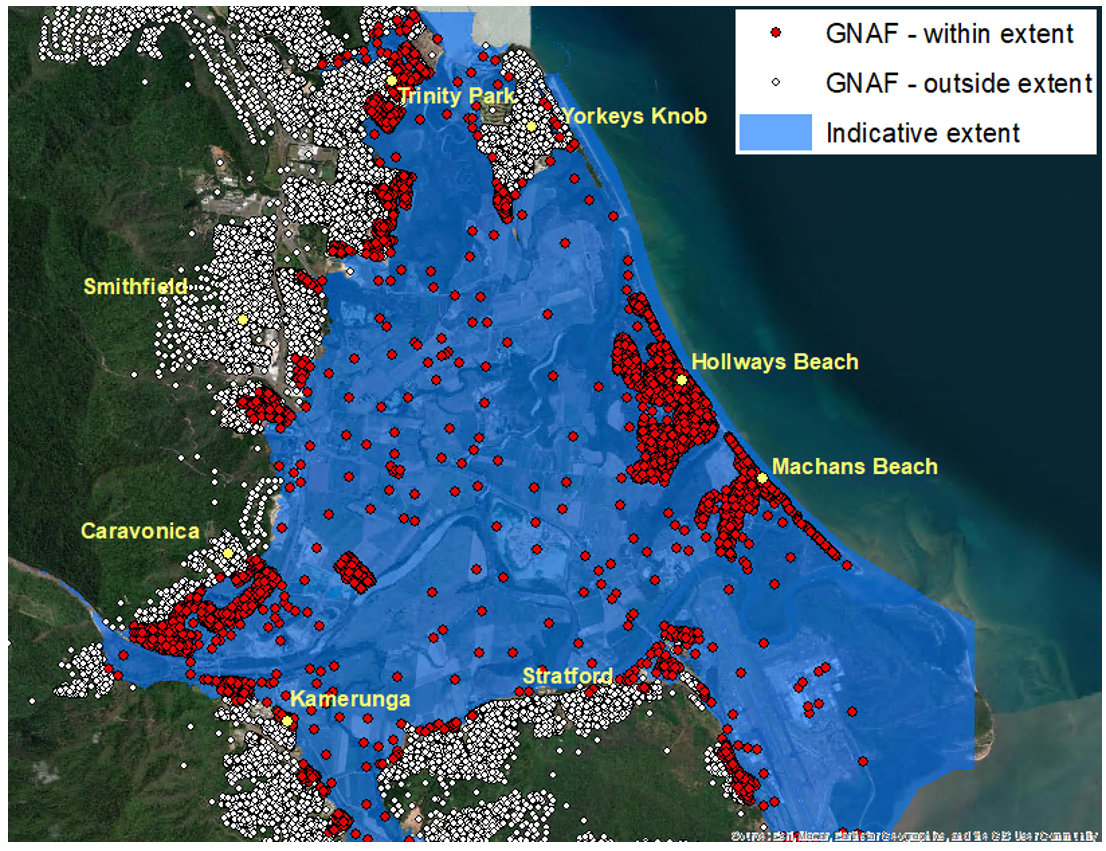
Source: Guy Carpenter/Council Modeling
Damage Impacts
Cairns Airport canceled flights in the early afternoon of Sunday, December 17, with service resuming in the morning of December 19.
Significant flooding occurred along the Barron River around Machans Beach, Holloways Beach, Caravonica, Mareeba and Cairns Airport. There was also reported flooding in Trinity Park, Smithfield and Aeroglen. Major flood warnings were issued for Daintree River, Mossman River, Mulgrave River, Johnstone River catchment, Tully and Murray Rivers, and Herbert River.
The Insurance Council of Australia (ICA) declared a significant event on December 18 for Cyclone Jasper and associated flooding in northern Queensland. The ICA noted that it was too early to determine the insurance impacts, and the event might escalate to a catastrophe event if a significant increase in the number of claims or geographical extent followed.
Top 10 Insured Losses from Cyclones in Queensland
The table below shows normalized loss amounts from large historical cyclone events based on the data from the ICA.
Table 2: Top 10 Insured Losses from Historical Cyclones in Queensland.
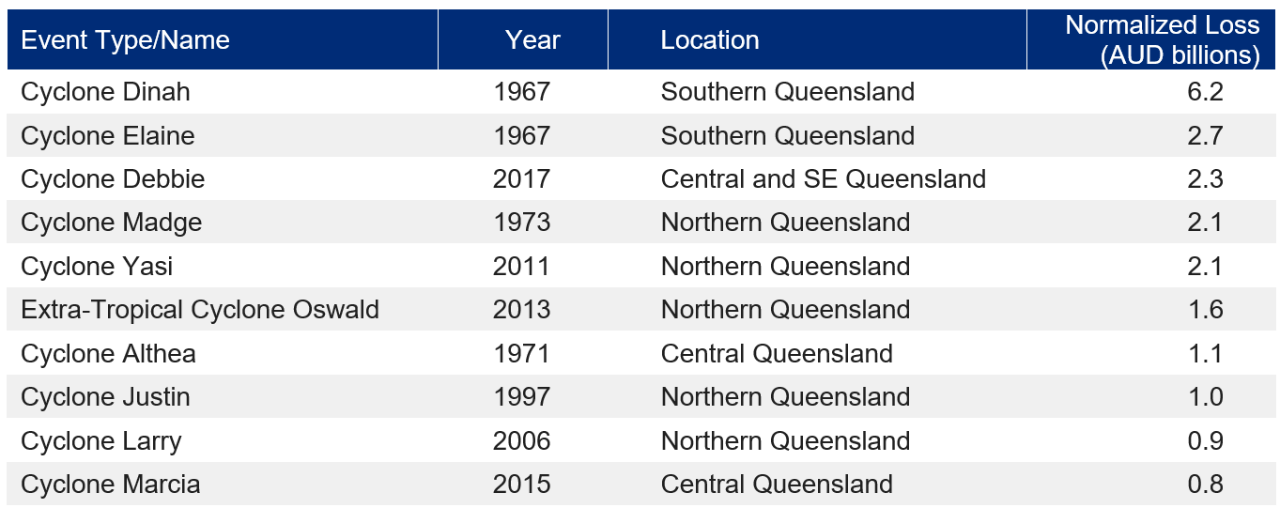
Source: ICA
On December 21, the ICA named this catastrophe event Ex-Tropical Cyclone Jasper. It is not expected to produce a major insurance or reinsurance market loss, but it can affect insurers with regional concentration in far north Queensland. Considering the sparse population and the homes values in the region, Ex-Tropical Cyclone Jasper is unlikely to reach the top 10 historic cyclones.
Cyclone premium in disaster-prone areas has been high, and affordability has been an issue. The Australian Cyclone Reinsurance Pool was designed to solve this problem. It commenced operations on July 1, 2022. It is a reinsurance arrangement between insurers and the Australian Reinsurance Pool Corporation (ARPC).
This was the first significant cyclone since the formation of the Cyclone Reinsurance Pool and has put a spotlight on the definitions of a cyclone and whether the pool will function as intended. It provides coverage for all wind, surge and associated flooding loss within a 48-hour period after a cyclone downgrades to Category 0. ARPC declared Cyclone Jasper’s start on December 10 at 4 p.m. AEST and end at midnight AEST December 16. Under this definition, the majority of wind losses likely would be covered by the pool, while subsequent flooding after midnight AEST December 16 would not be covered by the pool. The ARPC states that “the cyclone pool is designed to lower insurance premiums for homes (including strata) and small businesses with high risk of damage due to cyclone and related flood.”
Jasper has demonstrated that flooding from cyclones could fall outside the Cyclone Reinsurance Pool. As significant flood claims from Jasper are paid directly by insurance companies and not the pool, there will be an increased focus from insurers on the price and availability of flood insurance, in addition to scrutiny of the event definitions for modeling and pricing. This could in turn impact the insurance affordability and potential lowering of premiums that was the intention of the Pool.
POST EVENT: EX-TROPICAL CYCLONE JASPER
Sources: Bureau of Meteorology, Insurance Council of Australia, Australian Broadcasting Company, The Guardian, Australian Reinsurance Pool Corporation